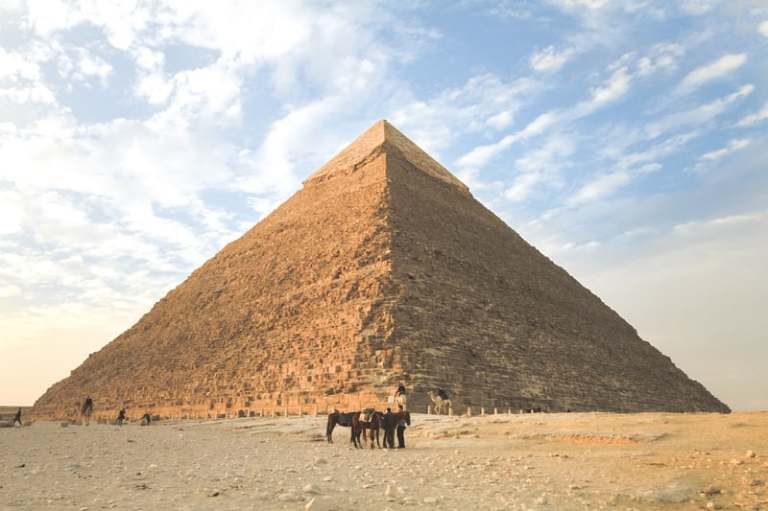
Great Ziggurat Of Ur: 19 Facts About This Mysterious 4,000-Year-Old Middle Eastern Pyramid
This fascinating ancient temple to a Sumerian moon god has survived four millennia, the elements, and military attacks, but it still stands strong and proud.
1.
A “ziggurat” is a massive terraced building that visually resembles the Mayan pyramids but was built in ancient Mesopotamia thousands of years before the Mayan pyramids were built.
2.
Ziggurats looked like step pyramids and featured anywhere from two to seven levels. As far as design goes, they were very similar to the early Egyptian step pyramids.
3.
They were typically built as shrines to the city’s patron god. The Great Ziggurat of Ur was originally thought to be a shrine to the moon god Nanna. It is thought that the top level of the ziggurat was a bedchamber for Nanna. Priests would perform sacrifices and other rituals on the top level.
4.
Remains of ziggurats, in various states of decomposition, are scattered throughout what are now modern-day Iraq and Iran.
5.
History’s largest ziggurat is thought to be the one in Babylon, which was thought to be 300 feet high and measured 300×300 feet at its base.
6.
The Great Ziggurat of Ur is perhaps the world’s best reconstructed ancient ziggurat and has undergone several renovations since it was originally built over 4,000 years ago.
7.
It was originally constructed by King Ur-Nammu, who ruled over the ancient fortressed city of Ur. Construction was finished by his son, King Shulgi.
8.
It also served as an administrative complex for the city of Ur, which over time became one of the most prominent cities in Mesopotamia.
9.
It was named “Etemenniguru,” which in Sumerian means “temple whose foundation creates a great aura.”
10.
As the highest point in the city, the Great Ziggurat of Ur would have been visible for miles around.
11.
A massive step pyramid, it measures 210 feet in length, 150 feet in width, and was thought to have originally been about 100 feet in height. The reason no one knows how high it originally was is that in the 4,000 years since its construction, the top levels have completely disappeared due to erosion.
12.
The base of the Great Ziggurat of Ur is composed of nearly three-quarters of a million mud bricks, each weighing about 33 pounds. The fact that it was constructed over 4,000 years ago shows that ancient civilizations may not be as primitive as we think.
13.
A full 1,500 years after it was originally constructed, the Great Ziggurat of Ur was in ruins. It was restored around the 6th century BCE during the Neo-Babylonian period by King Nabodinus.
14.
It was originally constructed with mud bricks, which got damp in the rain and cracked under the parched desert sun. The Babylonian reconstruction involved cement. Over time, the elements had pulverized the Great Ziggurat of Ur to where it was hardly noticeable in the desert landscape.
15.
In the 4th century BCE, the Euphrates River changed course and completely wiped out the ancient city of Ur.
16.
After partial excavation attempts in the late 1800s and early 1900s, it was fully excavated in the 1920s and 1930s by Sir Leonard Woolley in a joint project with the University of Pennsylvania and the British Museum in London.
17.
In the 1980s, Iraqi dictator Saddam Hussein sponsored a thorough restoration of the ziggurat in which the lowest level’s façade and the staircase were entirely rebuilt.
18.
During the Gulf War of 1991, in a strategic move to protect the Great Ziggurat of Ur from destruction, Saddam Hussein parked some of his fighter jets right next to the edifice, figuring American pilots wouldn’t dare destroy such a historical monument. But it didn’t remain entirely unscathed, as over 400 bullet holes strafed its exterior during the fighting.
19.
The Great Ziggurat of Ur, which is not open to the public, resides in what is now the Dhi Qar province of Iraq on the edge of one of the largest military bases in the Middle East. ![]()









